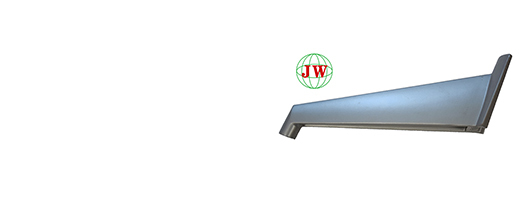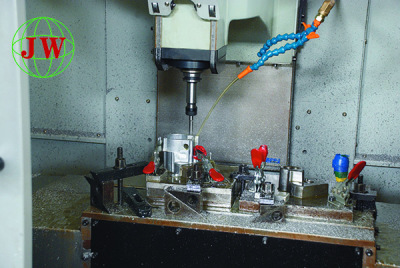
Asia-Pacific Leads Global Die-Casting Expansion: New Markets, Cross-Industry Use Cases, and Policy Support Drive Growth
2025-10-18 15:30
The global die-casting industry is witnessing a geographic and functional shift, with the Asia-Pacific (APAC) region emerging as the undisputed growth engine. Home to 70% of global die-casting production, APAC—led by China, India, and Southeast Asian nations—is not just scaling existing capacity but also pioneering new applications across sectors beyond automotive. From power electronics to renewable energy, die-cast components are becoming essential in high-growth fields, while regional policies supporting manufacturing and sustainability are further accelerating innovation. As of 2024, the APAC die-casting marketalone is valued at
55billion,withforecaststoreach
82 billion by 2030—a CAGR of 7.2%—outpacing global averages, according to Statista. This expansion is reshaping the industry’s landscape, driven by three interconnected forces: regional market diversification, cross-industry adoption, and policy-backed sustainability.
APAC’s Regional Surge: China’s Dominance and Southeast Asia’s Rise
China remains the backbone of APAC’s die-casting sector, accounting for 58% of the region’s production. The country’s role as a global hub for EV manufacturing (it produces 60% of the world’s EVs) has fueled unprecedented demand for large-format die-casting molds—used for parts like EV chassis and battery packs. Major Chinese die-casters, such as Ningbo Haitian Precision and Guangdong Hongtu Technology, have invested over $2 billion in new HPDC (High-Pressure Die-Casting) facilities since 2023, with some plants capable of producing molds weighing up to 150 tons.
But Southeast Asia is quickly emerging as a secondary growth pole. Countries like Vietnam, Thailand, and Malaysia are attracting die-casting investments thanks to lower labor costs, free trade agreements (FTAs), and proximity to key markets like China and India. For example, Japanese die-casting giant Ryobi recently opened a $120 million facility in Vietnam to produce aluminum die-cast partsfor EVs and consumer electronics, targeting exports to Southeast Asia and Australia. Thailand, meanwhile, has positioned itself as a “die-casting hub for ASEAN,” offering tax breaks to foreign manufacturers that set up local plants—BMW’s Thai die-casting unit now supplies 30% of the automaker’s APAC EV component needs.
India, too, is joining the fray. With the government’s “Make in India” initiative offering subsidies for domestic manufacturing, Indian die-casters like Endurance Technologies are expanding capacity to meet demand from both local EV makers (e.g., Tata Motors) and global brands. In 2024, India’s die-casting market grew by 12% year-over-year, driven by a surge in orders for die-cast motor casings and charging station components.
Cross-Industry Adoption: Die-Casting Moves Beyond Automotive
While automotive remains the largest end-user, the die-casting industry is breaking into high-growth sectors, unlocking new revenue streams. Two areas stand out: power electronics and renewable energy.
In power electronics—critical for EVs, data centers, and 5G infrastructure—die-cast heat sinks are replacing traditional aluminum extrusions. Die-cast heat sinks offer better thermal conductivity and can be shaped into complex geometries, making them ideal for cooling high-performance chips. Chinese tech giant Huawei, for instance, now uses zinc-aluminum die-cast heat sinks in its 5G base stations, reducing overheating risks by 40% and extending equipment lifespan. The global market for die-cast power electronics components is expected to grow at a 9.5% CAGR through 2030, according to Grand View Research.
Renewable energy is another key frontier. Solar inverters and wind turbine generators require durable, corrosion-resistant parts—and aluminum die-cast enclosures fit the bill. Indian renewable energy firm Adani Green uses die-cast enclosures for its solar inverters, as they withstand extreme temperatures (from -20°C to 60°C) and prevent dust/water damage. In wind energy, die-cast magnesium alloy components are being tested for turbine blades, as their lightweight properties reduce the load on turbine shafts, boosting energy efficiency. Vestas, a leading wind turbine maker, has partnered with a Singaporean die-caster to develop these parts, with commercial production set to start in 2025.
Even the medical device sector is embracing die-casting. Stainless steel die-cast components are used in surgical tools and diagnostic equipment, as they meet strict hygiene standards (resistant to sterilization chemicals) and offer precise dimensional accuracy. Japanese medical device maker Olympus now uses die-cast parts in its endoscopes, reducing production costs by 25% compared to machined components.
Policy and Sustainability: Shaping the Future of Die-Casting
Regional policies in APAC are not just driving growth—they’re reshaping how die-casters operate, with a strong focus on sustainability.
China’s “Dual Carbon” goal (peaking carbon emissions by 2030, carbon neutrality by 2060) has pushed die-casters to adopt greener practices. Many plants have switched to electric die-casting machines (replacing gas-powered ones), cutting carbon emissions by 30%. Others are investing in on-site solar panels: Ningbo Haitian’s new facility generates 40% of its electricity from solar, reducing reliance on fossil fuels. The Chinese government also offers tax rebates for die-casters that use 80%+ recycled metals in their components—a move that has increased recycled aluminum usage in die-casting from 55% in 2020 to 72% in 2024.
India’s “National Green Hydrogen Mission” is another catalyst. The mission, which aims to make India a global hub for green hydrogen production, requires large die-cast storage tanks (for hydrogen) that are leak-proof and corrosion-resistant. Indian die-casters are partnering with international firms to develop these tanks, using specialized aluminum-lithium alloys that can withstand high hydrogen pressure. The government has earmarked $100 million in grants for die-casters working on green hydrogen-related components.
Southeast Asian nations are also prioritizing sustainability. Thailand’s “Bio-Circular-Green (BCG) Economy” policy offers subsidies for die-casters that implement waste-reduction measures—such as recycling scrap metal into new die-cast parts. Vietnamese die-casters, meanwhile, are adopting water-saving cooling systems for HPDC machines, reducing water usage by 50% per unit of production.
Challenges and Opportunities Ahead
Despite its momentum, the APAC die-casting sector faces hurdles. Supply chain disruptions—such as shortages of H13 hot-work steel (used in mold making)—have delayed production for some firms. Additionally, skill gaps persist: India and Vietnam report a 30% shortage of trained die-casting technicians, slowing plant expansion.
But opportunities outweigh challenges. The rise of “local for local” manufacturing (brands producing components near end markets) will drive further investment in Southeast Asia. Cross-industry demand—from green hydrogen to 5G—will open new use cases. And ongoing material innovations, such as low-carbon aluminum alloys, will help die-casters meet sustainability goals while cutting costs.
As the APAC region leads the way, the global die-casting industry is entering a new era of growth—one defined by geographic diversification, cross-sector collaboration, and green innovation. For die-casters that adapt to these trends, the next decade will bring unprecedented opportunities to power the region’s manufacturing boom and shape a more sustainable future.
Get the latest price? We'll respond as soon as possible(within 12 hours)












